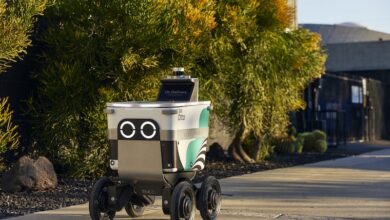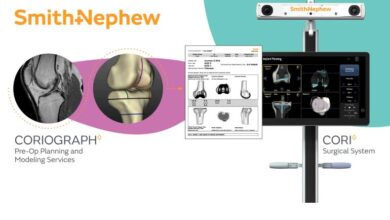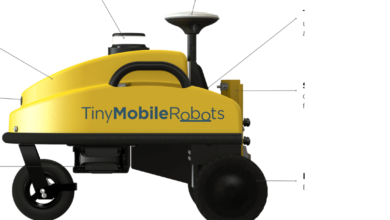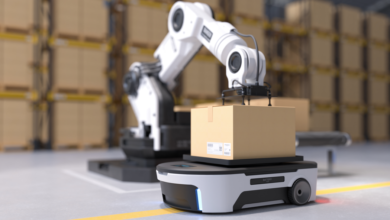A Future of Enhanced Connectivity for Cars and Robotics

By Kevin Armstrong
Tesla appears to be planning an ambitious project to build a private 5G network. This initiative would revolutionize connectivity for its vehicles and the robot, Optimus, as well as any other plans the company is likely to develop in the future.
Innovative Job Posting Reveals Big Plans
Although now removed, a recently spotted job posting for a Cellular Systems Integration Engineer on Tesla’s career page shed light on the company’s intentions. The role demands expertise to elevate Tesla’s vehicle and Optimus robot connectivity, promising to push the boundaries of low latency and high data rates.
Tesla’s journey from 3G to the anticipated 5G upgrade will bring about ultra-reliable communication and high-speed data transfer, crucial for over-the-air software updates, autonomous driving features, and real-time data analytics.
The Strategic Role of Private 5G Networks
Deploying its private 5G network, Tesla aims to create a seamlessly connected environment in its manufacturing facilities, research labs, and outdoor spaces. This infrastructure is not just about enhancing vehicle connectivity; it’s also pivotal for the operational efficiency of the Optimus robot in various scenarios, including warehouse operations.
Tesla’s foray into private 5G networking places it in an advantageous position in the automotive and tech industries. This strategic move aligns with the global trend towards adopting private 5G networks, which promise to revolutionize industries with their reliability and speed. Tesla’s efforts to develop a private 5G protocol stack that integrates with any cellular infrastructure globally will set new industry standards.
With 5G, Tesla vehicles and Optimus robots will benefit from significantly reduced latency, offering under 5 milliseconds compared to the 60-98 milliseconds of 4G networks. This technological advancement is expected to enhance the functionality and responsiveness of Tesla’s products, paving the way for advanced autonomous driving capabilities and efficient robot operations.
Conclusion
Tesla’s interest in developing a private 5G network is a logical step. By building an infrastructure that supports the fastest connectivity standards, Tesla is preparing for its vehicles and laying the groundwork for sophisticated robotics applications. This endeavor reflects Tesla’s ongoing commitment to innovation and its role in shaping the future of transportation and automation.
By Kevin Armstrong
Italy has been discussing with Tesla about potentially establishing a factory producing electric trucks and vans. This information came to light in an Italian media outlet, Il Sole 24 Ore, which reported that the Ministry of Business and Made in Italy (Mimit) spearheaded talks to secure Tesla’s investment.
Tesla and Italy: A Strategic Dialogue
Since last summer, Italy has broadened its industrial horizons by engaging in talks with Tesla, alongside negotiations with prominent Chinese manufacturers such as BYD, Great Wall Motors, and Chery Automobile. Notably, the discussions with Tesla have centered around producing electric commercial vehicles, highlighting a departure from conventional car manufacturing and reflecting the evolving demands of the global market.
Under the leadership of Minister Adolfo Urso, Italy aims to invigorate its automotive sector by encouraging the presence of multiple manufacturers. This approach is designed to stabilize the national components sector, which faces challenges due to the shift towards electric vehicles. Italy aims to produce 1.3 million vehicles annually, including a significant contribution from a new yet-to-be-determined manufacturer.
A Geopolitical and Industrial Balancing Act
Italy’s engagement with Tesla occurs amidst a delicate phase of negotiations with Stellantis for increased vehicle production within the country. This strategic dialogue with Tesla, alongside discussions with Chinese competitors, is a pivotal element in Italy’s industrial and geopolitical maneuvering.
A multipurpose van is the next logical step for Tesla to produce once the less expensive next-gen platform is released (code name Redwood). However, engineers seem to be busy perfecting the next-gen Roadster, and the van has had little discussion. Given the company’s leaks, if a van were in the works, you would think we would’ve heard about it. Perhaps this is the nudge Tesla needs to get the van into production.
As Italy endeavors to become a key player in the electric vehicle industry, its negotiations with Tesla signify a promising development. The possibility of Tesla establishing a facility for electric trucks and vans in Italy underscores the country’s commitment to sustainable transportation and positions Italy as an attractive destination for automotive innovation.
By Kevin Armstrong
Tesla’s FSD Beta 12.3.2 is making its way to cars in the U.S. along with an update to the 2024.3 branch, which includes all the features from update 2024.2, it also includes the new vision-based Autopark feature, which is available on vehicles without ultrasonic sensors for the first time.
Key Highlights of This Update:
-
Includes the latest FSD Beta v12.3.2, which corrects several issues in v12.3.1, which is a huge improvement from the v11 releases
-
It’s update 2024.3.5, which means that it includes all the features in update 2024.2, including the new Trips menu, Supercharging improvements, ultra-wideband support, and a helpful reminder to plug in at home
-
Introducing an improved Autopark feature that leverages neural networks, this update aims to address the limitations of previous versions, offering a more intuitive and efficient parking solution that promises to outperform its predecessors significantly. It also brings the feature to vehicles without ultrasonic sensors for the first time
Exclusive to the US (For Now):
-
The update is rolling out exclusively in the US initially, however, Canadians are now being updated to v12.3.1 with update 2023.44.30.30
-
Eligibility extends to users on update 2024.2.x, ensuring a broader base of Tesla owners can buy or subscribe to FSD Beta. This is also expected to be the version that will offer a free month of FSD Beta to Tesla owners
Beyond the Update: FSD’s Evolving Landscape:
Tesla is leveraging the awe of Full Self-Driving (FSD) technology by offering new and current eligible owners a one-month free trial of FSD following the positive feedback on version 12.3.1. Musk announced that the feature will be available this week, although it’s not clear whether that will include just new owners initially or everyone. This initiative aims to showcase the advanced capabilities of FSD and familiarize users with the convenience and safety of minimal driver intervention. Elon Musk, satisfied with the performance of FSD 12.3.1, announced this trial to encourage further the adoption of Tesla’s FSD feature in the U.S.
Furthermore, Tesla has introduced FSD demonstrations as part of the delivery process for new vehicles equipped with FSD, ensuring customers understand and experience the benefits firsthand. This approach highlights Tesla’s recent achievements and boosts customer confidence and acceptance of self-driving cars. Musk announced that all new vehicle deliveries must include a hands-on demo of FSD.
Musk stated that a new update to FSD will be available every two weeks, indicating how much data the Tesla team is getting from the millions of miles logged under the new system. The comment by Musk is faced with some skepticism as recent FSD Beta updates have been months apart. However, Tesla has reached major milestones recently with the public release of FSD Beta v12, the new, vision-based Autopark feature, and the expected upcoming release of Actually Smart Summon next month.



